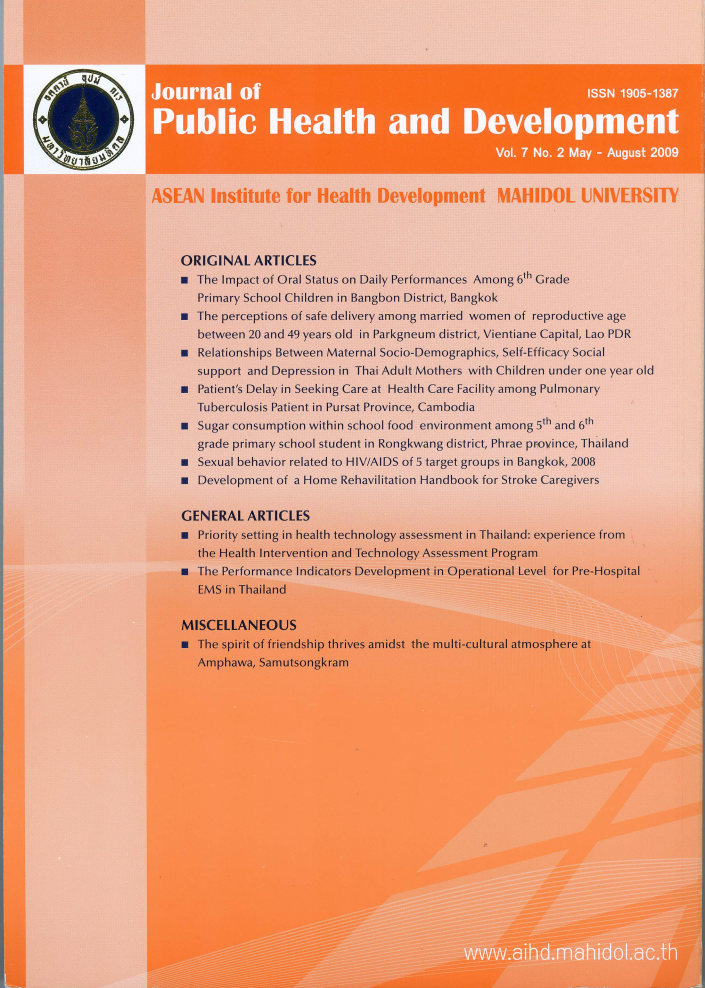Sugar consumption within school food environment among 5th and 6th grade primary school student in Rongkwang district, Phrae province, Thailand
Main Article Content
Abstract
The sugar consumption of children in Thailand was high compared with the standard of appropriate sugar consumption (30g/day), and most of sugar consumes in the form of soft drink and snack. Children also spend a large amount of time in school, school food environments were then indicated as the important factor influencing children eating behavior. Sugar consumption was also related to the cause of many health problems: obesity, dental caries and some chronic disease. This study therefore focused to study on sugar consumption within school food environment of primary school student.
A cross-sectional descriptive study was conducted to determine sugar consumption from snacks and beverages within school food environment. The study conducted with 320 students who study in 5th and 6th grade of 9 primary schools, Rongkwang district, Phrae province, Thailand. Data were collected by self-report of food intake, questionnaire with interview administered, and observation from 8 January – 5 February 2009.
The result showed that 71.25% of students consumed sugar in school at high level (>12g/day) and sweet beverage was the main source of sugar intake. Although, every school had policies to limit sugar consumption, sweet beverages were still found in all school. The result also revealed that students from different physical and economic environment were found statistically different in sugar consumption (p-value<0.001), however, the different was not found with political and socio-cultural environment. There was also statistically different of sugar consumption among students from 9 schools (p-value<0.001). This finding suggests that identification of nutrition value in snacks and beverages and stronger school food policy is needed to improve school food environment and introduce healthy food for students.


